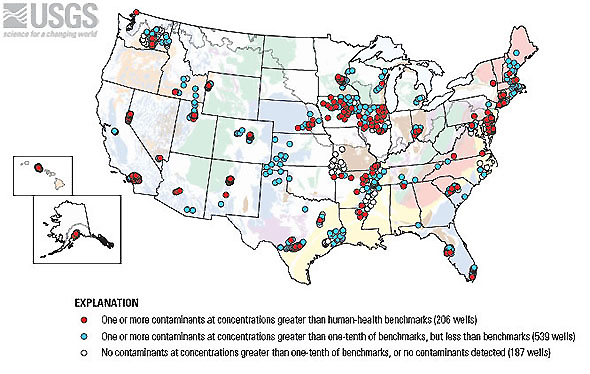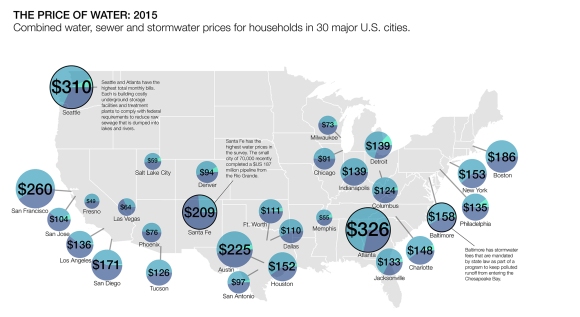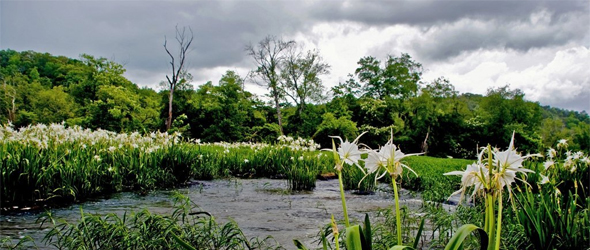North vs. South: Carolinas in Supreme Court Battle for Catawba River
 The Supreme Court battle between the Carolinas over the Catawba River, used by more than 30 cities and 17 counties for industry and drinking, has been postponed. Its been two years since South Carolina filed a federal lawsuit against its sister state.
The Supreme Court battle between the Carolinas over the Catawba River, used by more than 30 cities and 17 counties for industry and drinking, has been postponed. Its been two years since South Carolina filed a federal lawsuit against its sister state.
Last Monday should have been the first day that the Supreme Court began hearing South Carolina’s case against North Carolina over water withdrawals. However, the family emergency of an attorney in the case has prompted delay, reported the Charlotte Business Journal.
The first order of business in the suit is to decide if the power company Duke Energy, the Catawba River Water Supply Project, and the city of Charlotte can continue their borderline litigation suit.
South Carolina will argue because the Catawba is an interstate river—used by both states for “aquaculture, golf course irrigation, hydroelectric [power], industrial, irrigation, and thermoelectric water use, mining process, and [drinking] water supplies”— both states are granted equal rights under the Constitution, reported The Greenville News.
Named by American Rivers in 2008 as the most endangered river in the United States, the 300-mile (485km) Catawba River starts in the Blue Ridge Mountains of North Carolina and turns into the Wateree River in South Carolina, eventually emptying into the Atlantic Ocean. It serves as a 10-mile (15km) natural border for the Carolinas.
An “inter-basin” transfer approved by North Carolina’s Environmental Management Commission (EMC) in 2007 would re-direct 10 million gallons of water per day away from the Catawba—which means roughly 10 million gallons less per day will cross into South Carolina. This followed an EMC transfer that doubled Charlotte’s daily withdrawal from 16 million gallons to 33 million. South Carolina Attorney General Henry McMaster wrote in court reports that previous, similar permits have allowed for more than 72 million gallons of water withdrawals per day to be diverted from the Catawba in the North Carolina region.
McMaster argues that this fight is between states only, not individuals, and as a result Duke Energy, CRWSP and the city of Charlotte should be excluded from the Supreme Court trial, reports the Charlotte News. Over one million people depend on the river for drinking water, while the energy and manufacturing industry, which utilize the river for power generation and cooling, employ thousands. Tens of millions of dollars are generated by several coal, nuclear and hydroelectric power plants along the river.
Charlotte alone withdraws 33 million gallons per day from the Catawba, and the CRWSP consumes an additional 36 million gallons per day. Comprised of areas in both states, only five million gallons of the 36 used by Union County in North Carolina are being disputed by South Carolina. However, they make up half of the ten million gallons per day that the EMC approved in 2007, and there is an additional pending application to increase Union County diversions by 13 million gallons per day, according to court files.
Duke Energy—a Charlotte-based power company—owns all 11 hydroelectric power plants whose impoundments greatly affect the flows of the Catawba River. Duke argues that its licenses are highly dependent upon the state distributions, while South Carolina has said that reducing North Carolina’s withdrawals would make more water available to Duke’s reservoirs for energy generation.
The Supreme Court will announce a new date for the case this week.
Read more on Circle of Blue: Water Issues Dividing and Challenging the U.S.

is a Traverse City-based assistant editor for Circle of Blue. She specializes in data visualization.
Interests: Latin America, Social Media, Science, Health, Indigenous Peoples












South Carolina just wants the money. The Catawba has plenty of water still even though it is the most endangered. The states could have ended this dispute easily.
I think that was very greedy of South Carolina. They should have made a agreement with North Carolina.
My spoon is too big